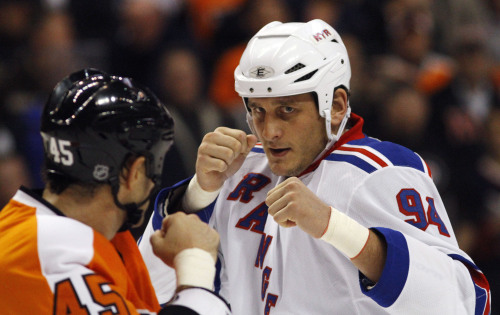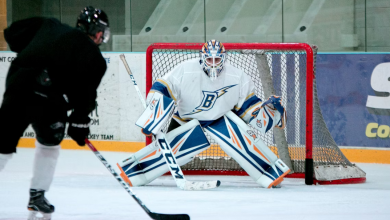Why Fighting Needs to Stay in the NHL

While I appreciate Andrew DiRienzo’s article, “Why Fighting Needs to Go in the NHL,” I would politely like to call it a load of crap. First off, if I wanted to watch a sport with no signs of physicality or action, I would turn on an NBA game. Fighting is what makes the NHL so unique. In no other sport can a player drop his gloves mid-game and just start going after another. It gets the fans pumped up. It’s entertaining and exciting. Taking fighting out of the NHL is like taking diving out of soccer: it’s not going to happen. It’s a part of the game, a part that will be around for a while.
In the article, DiRienzo bashes fighting and its consequences, but what about the pros of fighting? And yes, there are some. Fighting is a way for players to show their emotions. During a close game, emotions are high. Both teams want the W just as badly. Checks become harder, players skate faster, and some aggressive pushing and slashing takes place when the ref turns around. Fighting lets some of those emotions out. Sometimes nothing will make a player feel better than popping a guy who has been hitting them with their stick the entire game. It lets some anger out, and helps players go back to being composed and focused.
Fighting allows players to stand up for their teammates. If you’re someone who wants fighting completely banned, just think. If a player on the opposite team comes up and shoves your goalie or stops and gets snow in his face, do you not want something to be done? Do you want your team to just sit there and watch this happen? Or do you want someone to stand up for his teammate and retaliate. What that player did was wrong (not to mention an a**hole move), and they personally deserve some punches to the face if you ask me.
Fighting also allows a momentum change to occur in the game. When a fight breaks out, all other play is stopped. This gives the players on both teams a chance to catch their breath. Instead of having to call a timeout or ice the puck, players can simply regroup when a fight breaks out. It’s a quick break, but it’s just long enough to get themselves together and refocused by the time the refs break up the fight and call penalties.
DiRienzo mentions the safety issues with fighting, but he failed to acknowledge other sports that put their players/participants in more danger. MMA and boxing involves a lot more violence than hockey, and even football involves a great amount of hits and collisions to the head. The NHL is trying to make the sport safer. It has drawn up more rules and has called numerous hits illegal. It suspends players for their dangerous actions, and hopes that the suspension will teach the player not to act in that manner again.
It’s not like getting slammed into the boards or getting punched in the face isn’t expected by the players. They have given up their lives to prepare to be drafted into the show, and are fully aware that they will get into some scruffs. Some players even make a living out of getting into fights.
While the players are fully aware of fighting’s place in the NHL, so are the fans. They come to see some beautiful plays, a few hard hits, and a couple punches being thrown. Whether their team loses or wins, fans can always count on witnessing a fight or two. If the NHL bans fighting, the game’s atmosphere would be completely altered to an atmosphere I’m not sure that I would want to be a part of.

